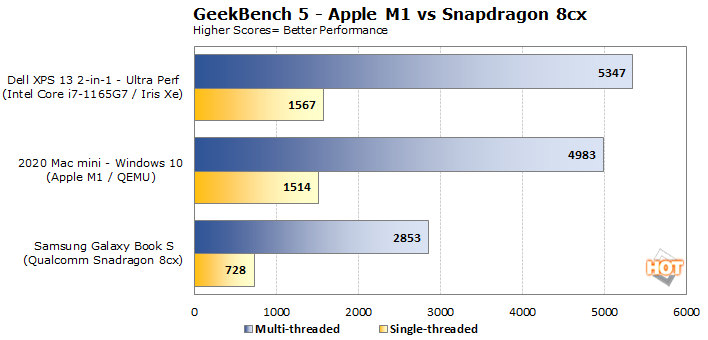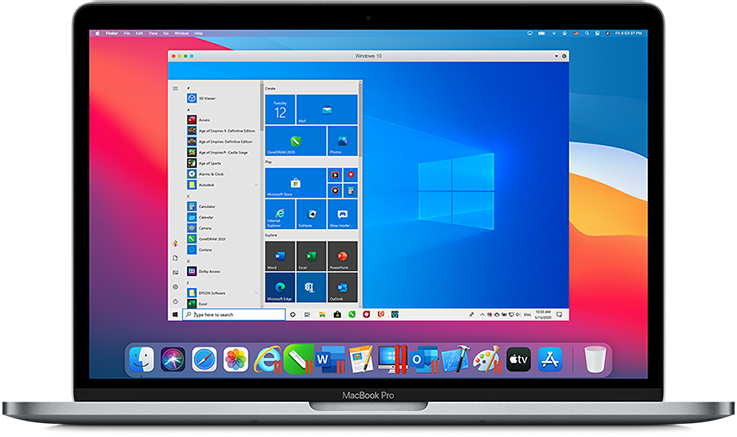From my understandin Parallels cannot support Windows 10 x64 on a M1 based Mac. Instead it will support Windows ARM. And Parallels is hoping that Windows Arm will get a x64 emulator. So it will end up in running a emulaor on a virtualized machine. Hp scanjet 3300c driver xp. Apr 06, 2021 Hi My Wife has an old ASUS ZenBook which she uses as a personal laptop but sometimes for work purposes. There is one bit of software she uses for work (order processing) which only works in Windows, the macOS version is 1-2 years away. Long story short, the Asus is on its last legs and I don't. Apr 18, 2021 Tests running Windows 10 with Parallels Desktop on an M1 MacBook Pro show the Apple laptop can be faster than high performing Windows laptops. YouTuber Max Tech ran the Geekbench 5 CPU benchmark. Apr 15, 2021 The easy option is a new version of Parallels desktop, the company’s desktop hypervisor for macOS. Released Wednesday, is now offered in a native version for Apple’s own M1 silicon. Parallels says the new offering is for Windows 10 ARM Insider Preview and “the most popular ARM-based Linux distributions.”.
Parallels has released a Technical Preview Program for running Parallels Desktop 16 on M1-powered Macs. The company says that it created a “new virtualization engine that uses the Apple M1 Mac chip hardware-assisted virtualization” to allow users to run ARM-based operating systems, including Windows, in a virtual machine.
Parallels points out some limitations with the first version of the Parallels 16 Technical Preview for Apple Silicon Macs:

- It is not possible to install or start an Intel x86 based operating system in a virtual machine.
- It is not possible to suspend and resume a virtual machine, including reverting to a “running state” snapshot.
- It is not possible to use the “close” button when a virtual machine is running – shut down the virtual machine instead.
- ARM32 applications do not work in a virtual machine.

The company says it continues to focus on expanding the capabilities of Parallels on M1 Macs as well:
Many Parallels Desktop features depend on a virtualization engine and guest OS architecture and must be developed nearly from scratch for the Apple M1 chip: starting from running an OS itself, graphics, the ability to suspend/resume a virtual machine, seamless integration, Coherence mode, Shared Folders, and many more. While our team continues to work hard on bringing all of the best Parallels Desktop features to Mac computers with Apple M1 chip, we are proud to share the results we achieved with this significant milestone.
With those limitations in mind, however, this technically means that you can run the ARM version of Windows using the Parallels Technical Preview on an M1 Mac. Microsoft does not sell a version of Windows that will run on Apple Silicon Macs with Parallels, but the company has made a version available to members of the Windows Insider Program.
You can head to the Microsoft website to download the Insider Preview version of Windows for use an Apple Silicon Mac with Parallels. If you’re not a member of the Insider Preview program, you can also request to join through this link.
Parallels Desktop M1
Here’s a look at the process of installing Windows through Parallels on an M1 Mac in action:
Today’s release of the Parallels Desktop 16 Technical Preview for M1 Macs comes less than a month after the company teased that it was in development. This release makes a major milestone in the ongoing quest for a way to run Windows on M1 Macs.
Do you plan on using the Technical Preview of Parallels Desktop 16 to run Windows on M1-powered Macs? Let us know down in the comments!
Read more about running Windows on M1 Macs:
Parallels M1 Apple Phone
FTC: We use income earning auto affiliate links.More.
Third-party app developers are really stepping up to revise their apps for the new Mac computers with the Apple M1 chip. Every day I receive update notices or see news stories about these updates.
Some of the Mac apps I use every day have released updates. These include the Microsoft Office for Mac suite, ScreenFlow, VLC and many others. (If I tried to give you a full list of the apps that have been updated, it would be out of date by the time you read this. Lol.) Not sure if a particular Mac app has been updated for the new Mac computers with the Apple M1 chip? Check the sidebar below.
Truthfully, Parallels is no exception. The latest versions of Parallels® Access and Parallels® Toolbox, are universal binaries, meaning they contain the necessary code to run at full speed on either Mac with Intel processor or Mac with the Apple M1 chip. You probably already know that in December Parallels released a Technical Preview of Parallels® Desktop for the new Mac with Apple M1 chip. Already, tens of thousands of Parallels beta testers have started using this Technical Preview.
At the risk of revealing my age, I was a Mac user when Apple switched from Motorola processors to PowerPC, and when they switched again from PowerPC to Intel. The switch to Apple Silicon appears (at first blush) to be moving faster, and with developers getting their apps updated much more quickly.
If you have a Mac with the Apple M1 chip, please let us know in the comments about your experience in this transition.
How to tell if a Mac app has been updated for Mac with the Apple M1 chip
There are two easy ways to check if an app has been updated for Mac with the Apple M1 chip:


#1: Look at the app’s Get Info Samsung kies galaxy j5. dialog
If you just want to check on a single app, this way is the best choice.
To open the app’s Get Info dialog, select the app, and then use Cmd-I, or choose the “Get Info” menu item on the right-click menu.
The “Kind” field will tell you whether the app is Universal or Intel.
See Figure 1.
#2: Look at the Mac System Report
If you want to check the status of all your apps, this way is a better choice.
To do so:
1. Choose the “About this Mac” option on the Apple menu.
2. Click on the “System Report” button.
3. Click on “Applications” in the “Software” entry in the left pane of the System Report window.
4. The “Kind” column will show you whether an app is Universal or Intel. Click on an individual app for more details.
See Figure 2.
